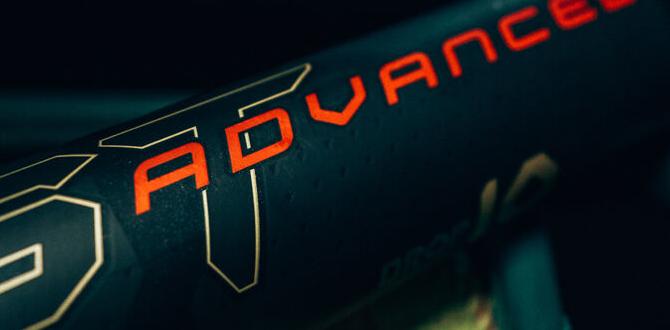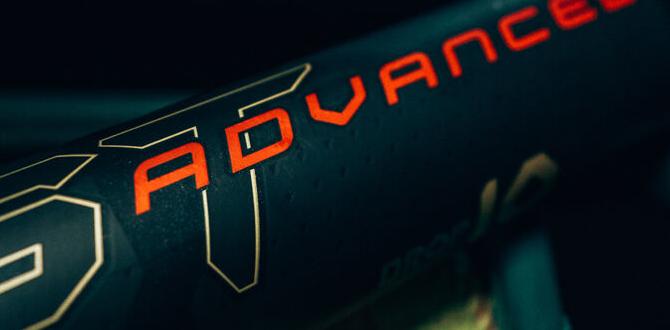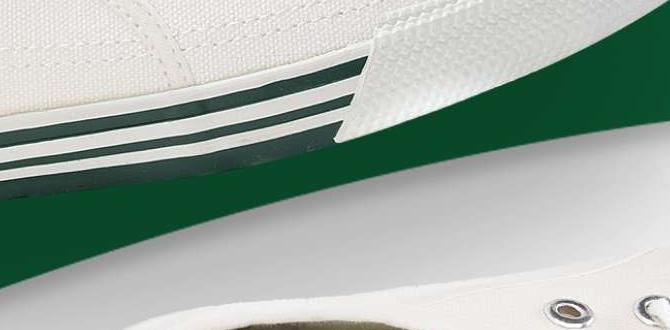The Easton catchers throat guard fitting is essential for comfort, safety, and optimal performance behind the plate. A correctly fitted guard protects your throat from errant pitches and foul tips, preventing serious injury without hindering your vision or movement. This guide will walk you through the simple steps to ensure a perfect fit.
Hey there, baseball and softball players! John P. Miller here from FriskMode, ready to dive into a crucial piece of catcher’s gear: the throat guard. If you’ve ever felt that sinking feeling of a pitch or foul ball getting a little too close to your neck, you know how vital this piece of equipment is. But getting it to fit just right? Sometimes that can be a head-scratcher. Don’t worry, we’ve all been there. A poorly fitted throat guard can be uncomfortable, distracting, and worst of all, less effective at protecting you. This guide is designed to demystify the process, offering clear, step-by-step instructions so you can get that perfect, secure fit. Let’s make sure you’re protected and playing with confidence!
Why Proper Easton Catcher’s Throat Guard Fitting Matters
As a catcher, your throat is one of your most vulnerable areas. Whether it’s a wild pitch that skips in the dirt or a sharp foul tip that deflects off your mitt, a direct impact to the throat can be incredibly painful and, in severe cases, lead to serious injury. The Easton catchers throat guard is specifically designed to absorb and deflect these impacts, acting as a crucial layer of defense. However, its effectiveness hinges entirely on a proper fit. If it’s too loose, it might shift out of place during a critical play, leaving you exposed. Too tight, and it can restrict your breathing, limit your vision, or cause discomfort that distracts you from the game. Getting this right ensures maximum protection without compromising your ability to perform at your best.
Understanding Easton Throat Guard Models
Easton offers a range of throat guards, each designed with different helmet models and player needs in mind. While the specific attachment mechanisms might vary slightly, the fundamental principles of a good fit remain the same. Most Easton throat guards are designed to attach directly to the catcher’s helmet. They typically feature adjustable straps or clips that allow for a customizable fit. Understanding which model you have is the first step. Common Easton models often integrate seamlessly with their own helmet lines, like the popular Easton Pro Comp or Prowess series, but many are designed to be universal to fit a wide variety of catcher’s helmets.
Some variations you might encounter include:
- Standard Throat Guards: These are the most common, offering solid protection and a straightforward attachment.
- Extended Throat Guards: Offering a bit more coverage, these may extend slightly lower on the neck.
- Integrated Throat Guards (less common but exist): Some helmet designs might have a built-in or integrated throat protection system.
Essential Tools and Preparations
You don’t need a workshop to fit an Easton throat guard; most adjustments can be made with your hands. However, a little preparation goes a long way:
- Your Easton Catcher’s Helmet: Make sure it’s clean and ready.
- Your Easton Throat Guard: Have it accessible and know its attachment points.
- A Mirror: This is incredibly helpful for seeing what you’re doing from different angles and ensuring symmetry. A full-length mirror or a large hand mirror works best.
- Comfortable Seating: You might be adjusting for a few minutes, so find a comfortable spot.
- A Helper (Optional but Recommended): A friend, parent, or coach can offer a second set of eyes and help ensure the guard is positioned correctly, especially for younger players.
- A Soft Measuring Tape (Optional): For precise measurements if you’re troubleshooting a fit issue.
Before you start attaching, take a moment to look at your helmet. Most catcher’s helmets have specific mounting points or bosses designed for throat guards. Familiarize yourself with these. Also, check the throat guard itself for any instructions or markings that indicate the correct orientation.
Step-by- Step Guide to Easton Catcher’s Throat Guard Fitting
Getting that perfect fit is a straightforward process. Follow these steps carefully:
Step 1: Identify Helmet Attachment Points
Examine your Easton catcher’s helmet. Look for pre-drilled holes, clips, or threaded inserts around the lower front rim of the helmet. These are where your throat guard will connect. Different helmet models might have 2, 3, or 4 attachment points.
Step 2: Align the Throat Guard
Hold the throat guard up to the helmet. Position it so that its attachment points (usually screws, clips, or straps) align with the corresponding points on the helmet. Ensure the guard is oriented correctly – the curved part should be against your helmet, and the protective bar should extend downwards towards your neck.
Step 3: Initial Attachment
Begin by loosely attaching the throat guard at one or two points. If your guard uses screws, thread them in a few turns but don’t tighten them yet. If it uses clips, hook them onto the helmet’s frame. The goal here is to secure it enough so it doesn’t fall off, but still allows for adjustment.
Step 4: Adjust for Position and Coverage
Now, put the helmet on. With the throat guard loosely attached, you can adjust its position.
- Height: Slide the guard up or down. You want the top of the guard to sit just below your chin and slightly overlap your face mask’s lower bar. It should not interfere with your vision when looking down.
- Width: Ensure the guard is centered. It should cover the vulnerable area of your throat evenly. Avoid it being too far to one side.
- Angle: Sometimes, the guard can be angled slightly. Adjust it so it feels comfortable and provides full coverage.
Ask someone to check the coverage from the front and sides. They should see the guard positioned to protect the center of your neck and the base of your throat, without obstructing your view.
Step 5: Secure the Fit
Once you’re happy with the position and coverage, it’s time to tighten.
- Screws: If your guard uses screws, tighten them evenly, alternating between each one. Don’t overtighten, as this can strip the threads or crack the helmet. Just make them snug.
- Straps/Clips: If your guard uses straps or clips, tighten them firmly. The guard should feel secure and not move around when you gently shake your head. Ensure any straps are tucked away neatly so they don’t catch on anything.
A secure fit means the guard stays put during dynamic movements like crouching, blocking, and throwing.
Step 6: Test for Comfort and Mobility
With the guard fully secured, put the helmet on again.
- Movement: Move your head up, down, left, and right. Does the guard restrict your neck movement in any way that feels unnatural or limiting?
- Breathing: Try taking deep breaths. Does the guard impede your ability to inhale freely?
- Vision: Look downwards as if you’re watching a pitch in the dirt. Does the guard significantly reduce your field of vision?
- Pressure Points: Feel for any areas where the guard is pressing uncomfortably against your neck or jaw.
If you experience any of these issues, you may need to loosen the fasteners slightly and readjust the position. It’s all about finding that balance between security and comfort.
Step 7: Final Check and Game Ready
Give the throat guard a final tug. It should feel solid, like an extension of the helmet. Ensure no parts are loose or dangling. If you have a helper, have them check again for symmetry and coverage. Once you’re satisfied, wear it for a short practice session or even just around the house. This helps you get used to the feel and identify any minor adjustments needed. Your protected throat is game-ready!
Troubleshooting Common Fitting Issues
Even with the best intentions, you might run into a snag. Here are some common problems and how to fix them:
Issue: Throat Guard is Too Loose and Shifts
Solution: Ensure all attachment screws are fully tightened. If your guard has adjustable straps, make sure they are cinched down. Some helmets have extra mounting points; ensure you are using the most secure ones. You might also consider using thin washers (if the screws are long enough) to create a tighter seal, or using a small amount of non-permanent thread locker (like Loctite Blue) on screws if they tend to loosen with vibration, though this is rarely necessary for throat guards.
Issue: Throat Guard Restricts Vision
Solution: Adjust the vertical position of the guard. Try sliding it slightly higher or lower on the helmet. You might need to reposition the entire guard. If even after adjustment it still significantly impairs vision, you may need to consider a different throat guard model or a helmet designed to work better with your current guard. Always prioritize safety, but ensure you can still see the game unfold.
Issue: Throat Guard is Uncomfortable or Digs In
Solution: Check for rough edges or burrs on the throat guard or helmet attachment points. Sometimes, simply rotating the guard slightly can alleviate pressure points. Ensure the guard isn’t touching your jawbone directly in an uncomfortable way. If it has adjustable straps, try loosening them very slightly and re-tightening to find a more comfortable tension. For minor discomfort, sometimes just playing with it for a bit allows soft tissues to adapt.
Issue: Throat Guard Doesn’t Seem to Cover Enough
Solution: Double-check that you have the correct throat guard for your helmet model. Some guards are designed for specific helmet series. Ensure the guard is positioned as low as possible while still allowing comfortable breathing and vision. An extended throat guard model might be a better option if you need more coverage.
Issue: Screws Won’t Tighten Properly or Spin Freely
Solution: This usually indicates stripped threads in the helmet or the screw itself. Be very gentle when tightening. If the threads are stripped in the helmet, you might try a slightly larger screw (ensure it’s the same thread pitch) or consider a helmet with intact mounting points. If the screw head is stripped, you’ll need a replacement screw. For minor stripping, a tiny piece of tape wrapped around the screw threads can sometimes give it enough grip to tighten, but this is a temporary fix. Proper gear maintenance can prevent many such issues.
Easton Throat Guard vs. Other Brands
While this guide focuses on Easton throat guards, the principles of fitting are largely universal across brands like All-Star, Wilson, and Rawlings. Easton often prides itself on its durable construction and integration with its own helmet lines, which can sometimes lead to a more seamless fit if you’re using an all-Easton setup. However, many Easton throat guards are designed with universal mounting systems, making them compatible with a broad range of catcher’s helmets, including those from other manufacturers. The key difference often lies in the material, design aesthetics, and specific attachment hardware used.
When comparing:
| Feature | Easton Throat Guard | Generic/Other Brands |
|---|---|---|
| Fit with Easton Helmets | Excellent, often designed for perfect integration. | Varies; may require more adjustment. |
| Universal Compatibility | Generally good, many models are universal. | Varies widely; check specifications. |
| Durability & Material | High; uses robust plastics and sometimes reinforced designs. | Can range from excellent to average. |
| Attachment Mechanisms | Specific clips, screws, or strap systems. | Diverse mechanisms; can be simpler or more complex. |
| Price Point | Mid-range to premium, reflecting brand and quality. | Can be more budget-friendly to competitive. |
Maintaining Your Throat Guard for Longevity
A properly fitted throat guard is built to last, but a little care goes a long way. After each use, especially in dusty or wet conditions, wipe down your throat guard with a damp cloth. Inspect the attachment points regularly for any signs of wear or damage. If it’s a screw-on model, periodically check that the screws are snug. Store your catcher’s gear, including the helmet and throat guard, in a cool, dry place, away from direct sunlight, which can degrade plastic over time. Proper cleaning and inspection ensure your Easton throat guard remains secure and protective for many seasons.
For more on gear care, the USA Baseball Player Bill of Rights also touches on the importance of player safety and equipment standards, underscoring why well-maintained gear is critical.
Frequently Asked Questions (FAQs) About Easton Catcher’s Throat Guards
Got more questions? We’ve got answers!
Q1: How tight should an Easton catcher’s throat guard be?
A: It should be snug enough to stay in place when you move your head, but not so tight that it restricts breathing or comfort. Think secure, not constricting.
Q2: Can I use an Easton throat guard on a non-Easton helmet?
A: Yes, many Easton throat guards are designed for universal compatibility and will fit on helmets from other brands. Always check the product description or try fitting it if possible.
Q3: How do I know if my throat guard is fitted correctly?
A: A correct fit means the guard covers the vulnerable part of your throat, doesn’t block your vision, allows you to breathe easily, and stays firmly attached when you move.
Q4: My throat guard keeps falling off; what should I do?
A: Ensure all attachment screws or clips are fully secured and that you are using the correct mounting points on your helmet. If threads are worn, you may need to repair or replace the mounting hardware or helmet.
Q5: Is it necessary for youth catchers to wear a throat guard?
A: Absolutely. Youth catchers are often still developing their skills and reflexes, making them more susceptible to unexpected impacts. A properly fitted throat guard is crucial for their safety.
Q6: Can a throat guard affect my ability to call pitches?
A: A well-fitted guard should not hinder your ability to communicate. If you find it’s blocking your view of other players or your pitcher, try adjusting its position slightly higher or lower.
Conclusion
Mastering the fit of your Easton catcher’s throat guard is a small but vital step in becoming a safer, more confident catcher. By understanding the attachment points, carefully adjusting for coverage and comfort, and performing regular checks, you ensure this essential piece of equipment does its job effectively. Remember, protection should never come at the expense of performance or comfort. Take your time, follow these steps, and you’ll have a neck guard that feels like a natural extension of your helmet, keeping you safe so you can focus on making those game-saving plays. Gear up smart, play hard, and stay protected!





